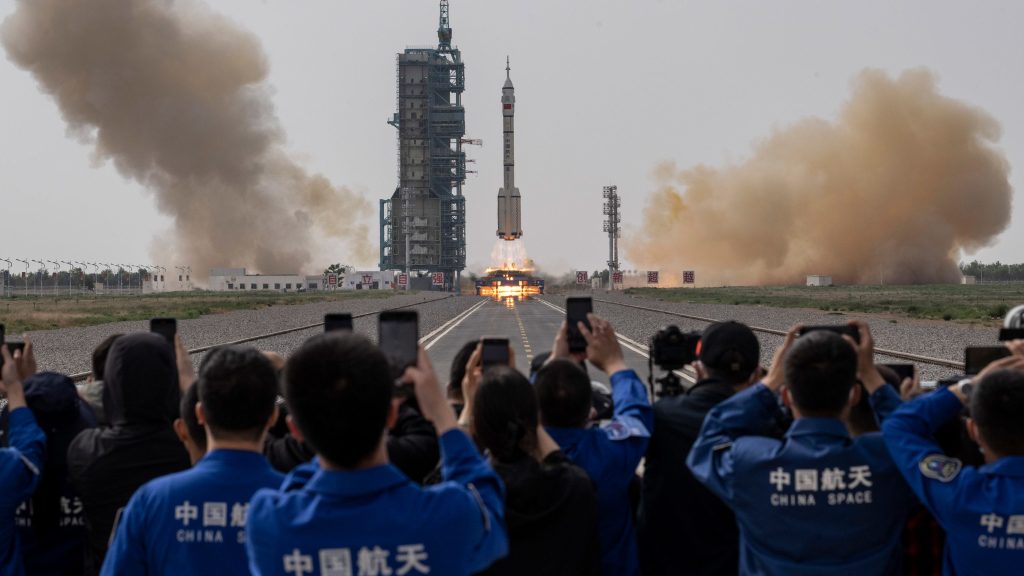China is shooting for the stars again, hatching a plan to put two rockets on the moon by 2030– with humans. This remarkable bit of news came courtesy of the China Manned Space Agency (CMSA) who declared their intention to take astronauts and a lander vessel beyond Earth’s atmosphere and onto our celestial satellite. Pretty wild stuff.
Compared to the space exploration technology of the US and SpaceX, China does not possess a super-powerful, large-capacity rocket. To fix that, they came up with a twofold solution. The first one’s an independent probe sent to orbit the moon. The other? A rocket steaming astronauts themselves. If everything goes according to plan when they hit lunar orbit, the crew will board the lander and take their first steps on the moon.
China’s got an ace-in-the-hole when it comes to lunar exploration thanks to their Long March 5 rocket. This reliable heavy-lifter can carry all the needs for a mission in two separate launches– including a human crew, lander, tools, and whatever else they might need. It’s a viable strategy, and one that hasn’t gone unnoticed.
China clearly isn’t playing around—they’ve got their eyes set on lunar expeditions. To make this dream a reality, they’re cooking up some pretty hefty rockets, namely the Long March 9 and 10. These bad boys could potentially cover the entire journey from Earth to Moon in one launch.
When they arrive, the Chinese astronauts are going to get right down to business. They’ll collect samples, work on experiments, and hit their marks. When it’s time to leave, the lander will take them back up to their spacecraft that will bring them home.
The grandiose, ambitious race to the moon has gained newfound momentum in the last few years. Interest in the lunar sphere has soared; spurred by the fascinating prospects of harnessing its vast mineral resources. The United States and China face a neck-and-neck race to lay down the first permanent base on the moon, with the US vocalizing its intention to use it as a launching pad for future space expeditions to Mars and beyond. NASA is hard at work preparing to send astronauts to the moon by 2025, but China is slightly lagging behind; having revised its schedule to prolong the mission until 2030.
Chinese researchers are striving to build the necessary components for a successful lunar touchdown, such as the extraordinary Long March super-heavy launch system, a state-of-the-art crewed spacecraft, a moon lander and a crewed roving vehicle. Proposals for permanent structures on the moon’s terrain have also been proposed.
China made a significant milestone in 2020 by successfully bringing back lunar samples through an unmanned mission, becoming the third nation to achieve this feat, following the United States and the Soviet Union.
With their determination and ambitious plans, China is poised to make substantial strides in lunar exploration, joining the ranks of space-faring nations on the forefront of scientific discovery and human achievement.

